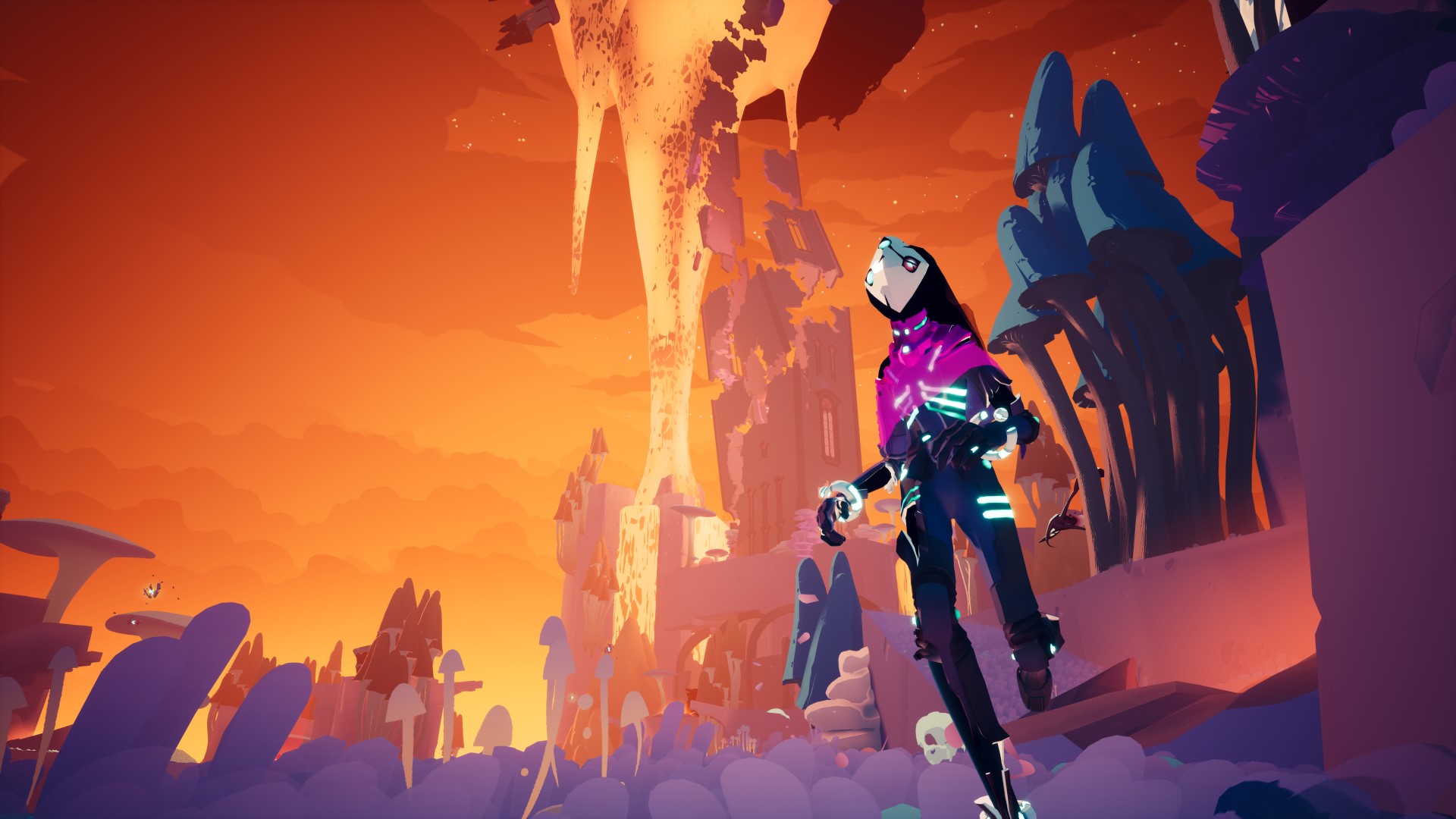

Each of its biomes is diverse - one is a government sector covered in acid, while another is a multilayered, gravity-bending area drenched in lava - but all are as gorgeous as they are expansive. While Solar Ash’s gameplay is dull, its world is the opposite. Moving rapidly and hacking away as the timer ticks down can be momentarily thrilling, but it’s just a fleeting tease that passes swiftly. Even boss fights, while wonderfully creative from a visual standpoint and awe-strikingly big in a Shadow of the Colossus type of way, follow the same formula as each other and the levels they’re in: slash the targets within a certain time limit to stab the eye.

Timed trials seem like a decent way to put the game’s central movement mechanics to the test, but, again, they’re relatively simple most of the time and don’t actually pressure the player, evolve, or push them to get better. This setup applies to each level, meaning it gets extremely repetitive and predictable. And each eyeball has an obstacle course of targets that have to be slashed within a certain time period before the eye itself can be impaled. Each territory has a boss fight that unlocks after stabbing a certain amount of goopy, evil eyeballs around the stage. Its repetition sets in even more when mindlessly cruising down the critical path. Repetitive stages with stale mechanics that don’t evolve means Solar Ash gets old quickly.
#Solar ash publisher upgrade#
An upgrade tree isn’t essential, but getting new moves or augmenting current ones would naturally change up the gameplay. There are a few very minor tweaks like plants that use spores from other plants as keys and grindable vines that have to be activated first, but it’s not enough and isn’t a change of pace that brings any meaningful challenge.Īnd since there’s hardly any challenge, there’s also hardly any satisfaction to be had since there are no deep mechanics to master. The level design hardly demands much of players and gives them the same basic jungle gyms in each environment. Grappling, skating, and grinding are all surface-level interactions that never grow in complexity as the game unfolds. It’s not even deep enough to make up for its lack of agility. For as much as this game feels like some sort of Sonic spin-off, it doesn’t match the impatient hedgehog’s pace. She just skates and grinds at a fairly leisurely pace. Rei’s movements don’t have much momentum so they lack the buildup of velocity that comes from many great traversal-focused games. Sometimes, that is the case, but it’s often underwhelming and falls short of what it could be.

Rei, the protagonist, can freely skate around, grind along rails, and grapple to certain points, all of which are meant to be chained together to create a rousing sense of speed as players fluidly blaze through environments with no interruption. Solar Ash initially appears as though it has some potential. However, unlike the studio’s last game, Solar Ash lacks any sort of mechanical complexity or narrative hooks and is a thoroughly unfulfilling and hollow experience. Solar Ash, the team’s second game, is radically different, keeping an inherently alluring visual style, but taking place in a small, 3D semi-open world. Developer Heart Machine’s first title, Hyper Light Drifter, was a solid debut that took the trappings of an early 2D Legend of Zelda game and layered in a beautiful pixelated aesthetic and simple yet satisfying combat system.


 0 kommentar(er)
0 kommentar(er)
